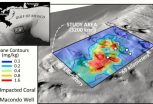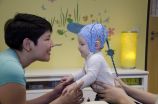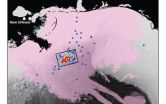(Press-News.org) Chicago, October 27, 2014—The Associated Press-NORC Center for Public Affairs Research today released the results of a major new study and related reports on the recovery from Superstorm Sandy in 12 New York and New Jersey neighborhoods hard hit by the 2012 storm.
It is the second AP-NORC study that has focused on the aftermath of Superstorm Sandy, with findings that emphasize the important role social factors play in a neighborhood's resilience: the ability of people and their social systems to survive, adapt and continue moving forward after a disaster. Funding for both studies was provided by the Rockefeller Foundation.
"The study had two central objectives," said Trevor Tompson, director of the AP-NORC Center. "First was to take a systematic and in-depth look at recovery in 12 very different neighborhoods two years after the storm. The second was to provide data and insight on the interplay of social factors, resilience, and long-term recovery to understand why some neighborhood areas are more resilient than others."
The central component of the study is a survey done by phone, on the web, and in-person completed with 1,009 residents of 12 neighborhoods in New York and New Jersey. The report includes analysis of the survey numbers and what the interviews, focus groups, and observations revealed in the form of stories about each of the 12 neighborhoods.
The Study Neighborhoods
Neighborhood; County, State
Babylon; Suffolk, NY
Breezy Point-Belle Harbor-Rockaway Park; Queens, NY
Gravesend; Kings, NY
Hoboken; Hudson, NJ
Islip; Suffolk, NY
Jersey City; Hudson, NJ
Long Beach; Nassau, NY
Long Branch; Monmouth, NJ
Lower East Side; New York, NY
Monmouth Beach; Monmouth, NJ
New Dorp-Midland Beach; Richmond, NY
Point Pleasant-Point Pleasant Beach; Ocean, NJ
The results show that while economic development and infrastructure of a community contribute to recovery in the wake of a disaster, resilience often differs in neighborhoods with similar economic and structural resources. Critical factors shaping a neighborhood's resilience are social resources and connections such as trust, community bonds, and other elements that give a neighborhood its human qualities.
Key findings of the study include:
While most neighborhoods are recovering, nearly 30 percent of residents report their neighborhood has recovered only halfway or less.
Less than half of residents say that most people have gotten most or all of the help they need to recover and restore their lives after the storm.
Neighbors are cited most often as helpful for the recovery, with 69 percent saying neighbors helped compared with 57 percent for local government and 55 percent for the federal government and FEMA.
People living in neighborhoods with more social connections and resources are more likely to say their neighborhood is well prepared to handle a disaster and more confident their neighborhood would recover quickly after a disaster.
Social resources can help overcome economic barriers to resilience. The positive effects of social resources on resilience are relatively similar across socioeconomic groups.
"Building resilience during normal times means that when disaster strikes, everyone is better able to manage," said Dr. Judith Rodin, President of The Rockefeller Foundation and author of the forthcoming book, The Resilience Dividend. "AP-NORC's latest research is clear: when cities make plans for building resilience, social resilience matters. The strength of neighborhood ties matters. And most of all, trust matters."
INFORMATION:
About The Associated Press-NORC Center for Public Affairs Research
The AP-NORC Center for Public Affairs Research taps into the power of social science research and the highest-quality journalism to bring key information to people across the nation and throughout the world.
The Associated Press is the essential global news network, delivering fast, unbiased news from every corner of the world to all media platforms and formats. Founded in 1846, AP today is the most trusted source of independent news and information. On any given day, more than half the world's population sees news from AP. On the Web: http://www.ap.org.
NORC at the University of Chicago is one of the oldest and most respected, independent research institutions in the world.
The two organizations have established the AP-NORC Center for Public Affairs Research to conduct, analyze, and distribute social science research in the public interest on newsworthy topics, and to use the power of journalism to tell the stories that research reveals.
About the Rockefeller Foundation
For more than 100 years, The Rockefeller Foundation's mission has been to promote the well-being of humanity throughout the world. Today, The Rockefeller Foundation pursues this mission through dual goals: advancing inclusive economies that expand opportunities for more broadly shared prosperity, and building resilience by helping people, communities and institutions prepare for, withstand, and emerge stronger from acute shocks and chronic stresses. To achieve these goals, The Rockefeller Foundation works at the intersection of four focus areas – advance health, revalue ecosystems, secure livelihoods, and transform cities – to address the root causes of emerging challenges and create systemic change. Together with partners and grantees, The Rockefeller Foundation strives to catalyze and scale transformative innovations, create unlikely partnerships that span sectors, and take risks others cannot – or will not. To learn more, please visit http://www.rockefellerfoundation.org.
Contact: For more information contact Eric Young at young-eric@norc.org or 703-217-6814; Ray Boyer boyer-ray@norc.org or 312-330-6433; Paul Colford for AP at pcolford@ap.org, or info@apnorc.org.
This news release is available in French. One in three children who have been reunified with their families after being placed in foster care will be maltreated again, according to a study into Quebec's youth protection system by Marie-Andrée Poirier and Sonia Hélie of the University of Montreal's School of Social Services. The study, the first of its kind in the world, was undertaken in the wake of a new law intended to improve the family stability of youth receiving child protection services.
The researchers, who are also affiliated with the Centre jeunesse ...
Due to its unprecedented scope, the damage assessment caused by the 2010 Deepwater Horizon spill in the Gulf of Mexico has been a challenge. One unsolved puzzle is the location of 2 million barrels of submerged oil thought to be trapped in the deep ocean.
UC Santa Barbara's David Valentine and colleagues from the Woods Hole Oceanographic Institute (WHOI) and UC Irvine have been able to describe the path the oil followed to create a footprint on the deep ocean floor. The findings appear today in the Proceedings of the National Academy of Sciences.
For this study, the ...
Humans are the only primates with large, highly visible sclera – the white part of the eye.
The eye plays a significant role in the expressiveness of a face, and how much sclera is shown can indicate the emotions or behavioral attitudes of a person. Wide-open eyes, exposing a lot of white, indicate fear or surprise. A thinner slit of exposed eye, such as when smiling, expresses happiness or joy. Averted eyes, as well as direct eye contact, can mean several things. So the eye white, or how much of it is shown and at what angle, plays a role in the social and cooperative ...
It's an often-agonizing challenge facing any parent of a child with autism: How can I help my son or daughter socialize with his or her typically developing peers? The solution, SF State's Pamela Wolfberg found, may lie in a different type of playgroup that focuses on collaborative rather than adult-directed activities.
A new study shows that "Integrated Play Groups," or IPGs, developed by Wolfberg over several years, are effective in teaching children with autism the skills they need to interact with their peers and engage in symbolic play such as pretending. In IPGs, ...
Where's the remaining oil from the 2010 Deepwater Horizon disaster in the Gulf of Mexico?
The location of 2 million barrels of oil thought to be trapped in the deep ocean has remained a mystery. Until now.
Scientist David Valentine of the University of California, Santa Barbara (UCSB) and colleagues from the Woods Hole Oceanographic Institution (WHOI) and the University of California, Irvine, have discovered the path the oil followed to its resting place on the Gulf of Mexico sea floor.
The findings appear today in the journal Proceedings of the National Academy ...
The first images of a nova during its early fireball stage--when it ejects material, and gases expand and cool--show that this activity is more complicated than predicted.
That is the conclusion, published in the current issue of Nature, from a research collaboration led by Georgia State University Astronomer Gail Schaefer that includes 37 researchers (many who are National Science Foundation (NSF)-funded) from 17 institutions. The researchers observed the expanding thermonuclear fireball from a nova that erupted last year in the constellation Delphinus.
"This is ...
The uncontrolled growth of cancer cells arises from their ability to hijack the cell's normal growth program and checkpoints. Usually after therapy, a second cancer-signaling pathway will open after the primary one shuts down — creating an ingenious escape route for the cancer cell to survive. The answer, say Case Western Reserve researchers, is to anticipate and block that back-up track by prescribing two drugs from the start. The results of the project, led by Ruth Keri, PhD, Professor and Vice Chair Department of Pharmacology, and Associate Director for Basic Research ...
1. Study: Prompt isolation of symptomatic patients is key to eliminating Ebola
Isolating the sickest Ebola-infected individuals before they progress into their late phase of illness can effectively eliminate the Ebola epidemic in Liberia, according to a modeling study being published in Annals of Internal Medicine. Currently, West Africa is in the midst of the largest and deadliest Ebola epidemic ever recorded. Liberia has been especially hard-hit with more than 3,500 infections and 2,000 deaths in the past three months. Researchers developed a random transmission model ...
COLUMBUS, Ohio – The drug erlotinib is highly effective in treating advanced-stage lung cancer patients whose tumors have a particular gene change, but when the same drug is used for patients with early-stage tumors with the same gene change, they actually fare worse than if they took nothing. A study by researchers at The Ohio State University Comprehensive Cancer Center – Arthur G. James Cancer Hospital and Richard J. Solove Research Institute (OSUCCC – James) and at Cincinnati Children's Hospital might show why.
Oncologists use erlotinib to treat ...
SPOKANE, Wash.—Americans are in a world of hurt.
Nearly one in five U.S. adults are in pain most every day for spells of three months or longer, according to an analysis by Jae Kennedy, professor of health policy and administration at Washington State University Spokane. The estimated 39 million adults in persistent pain outnumber the residents of California.
Previous studies have said so much pain costs hundreds of billions of dollars a year in lost productivity and health care. And that doesn't take into account pain's psychic toll.
"A sizeable portion of American ...



